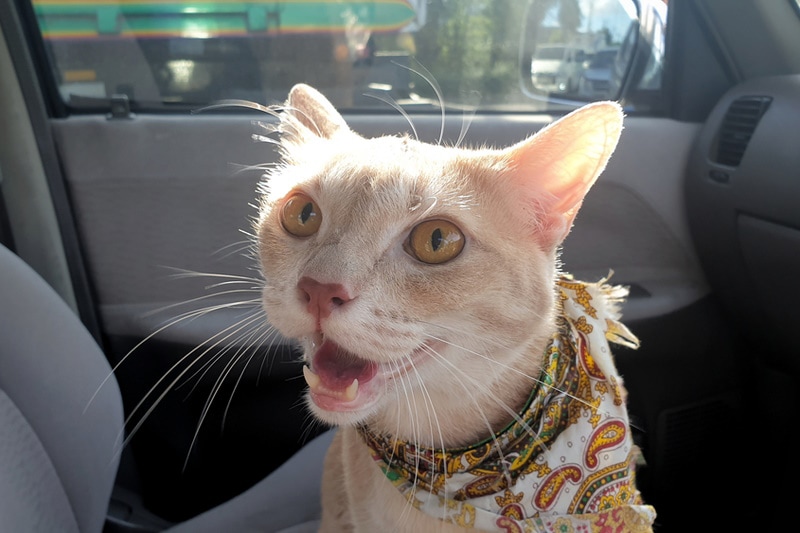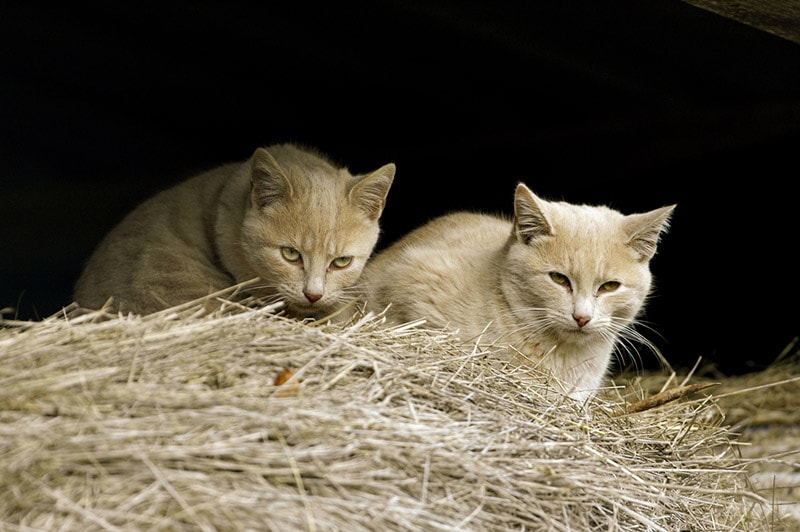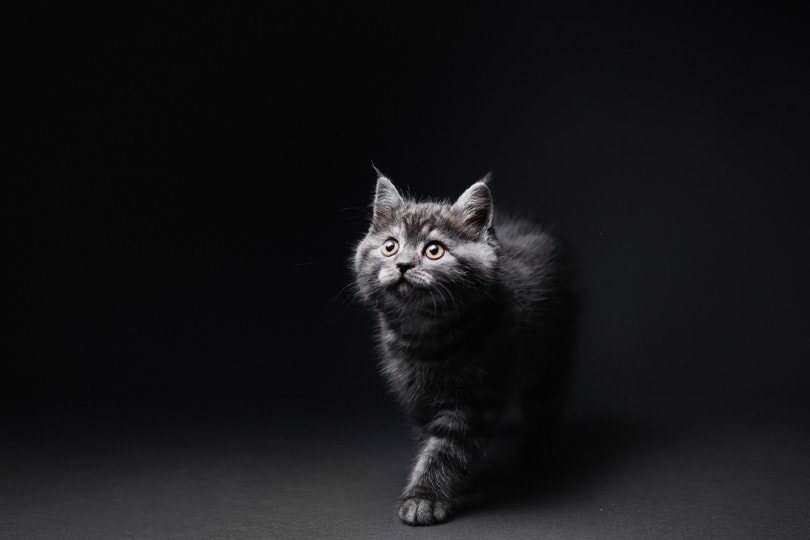My Cat Is Sleeping With Their Head Up, Is That Normal? What Science Tells Us

Updated on
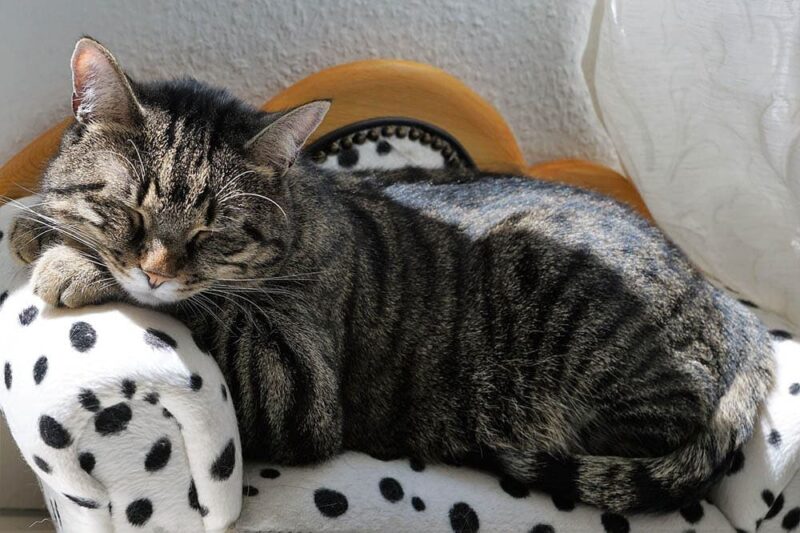
Cats have odd behaviors, and their sleep behaviors are no exception. With their angelic and peaceful appearance, a sleeping cat is truly an adorable sight. Watching your cat looking calm and innocent sleeping in odd positions is one of the joys of owning a cat. However, you may sometimes find your cat sleeping in unusual and seemingly uncomfortable positions.
While many of these positions appear relaxing and comfortable for the cat, you may find it strange to see your cat sleeping with their head up! Is this normal behavior? The short answer is yes, it is normal, and they have their reasons for sleeping like this. Read on to find out more!
Why Do Cats Sleep In the Loaf Position?
When cats sleep with their head up, it is called the ‘loaf position’—simply because they look like a loaf of bread! The loaf position is one of the various unique sleeping positions that cats may choose.
In the loaf position, your cat can tuck in their legs and tail close to their body with their head popped up in an upright position. This allows them to conserve heat, protect their vital organs, and stay relaxed. This behavior is rooted in their natural predatory instincts that allow them to conserve energy while still being aware of their environment.
When sleeping in this position, cats are typically only in a light sleep, while still alert and aware of their surroundings. Despite being vigilant and alert, cats in this position are still extremely relaxed and comfortable in their environment.
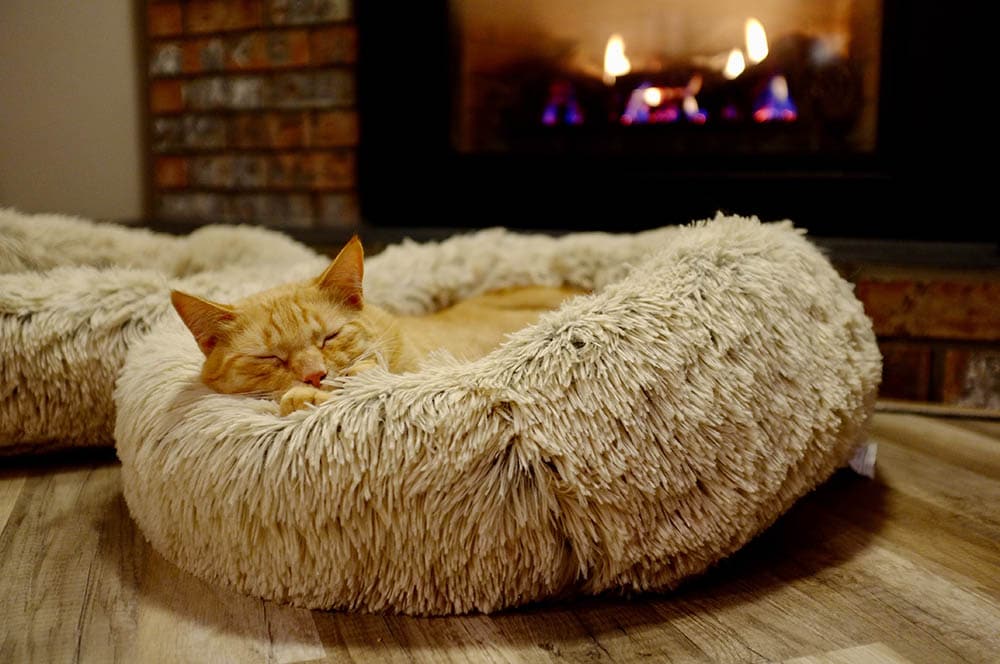
Is It Normal Behavior for Cats to Sleep With Their Head Up?
The loaf position is a completely natural and common sleeping position for cats!
Cats are known for their flexibility and agility, and this loaf position is an optimal way of conserving energy while still being prepared to pop up and move if they have to. You may think they are worried or stressed because of their need to remain alert, but cats sleeping with their head up actually feel safe, comfortable, and happy in their homes.
Cats are territorial creatures—so just because they are watching over their surroundings doesn’t mean they can’t catch a quick snooze in the process!
When Should This Be a Cause for Concern?
Cats sleeping with their head up in the loaf position are typically alert and in a light catnap sleep. When catching a good night’s rest, they will most likely have a different position that allows for a deeper sleep.
Cats sleeping with their head up is completely normal behavior, but if you notice that this is the only position your cat stays in for hours at a time, then there might be an underlying reason why they are doing so.
In order to determine if this resting or sleeping behavior is a cause for concern, it is important to familiarize yourself with your cat and note their usual sleeping habits. Understanding what is normal for your cat can help you pinpoint unusual sleeping behaviors more easily.
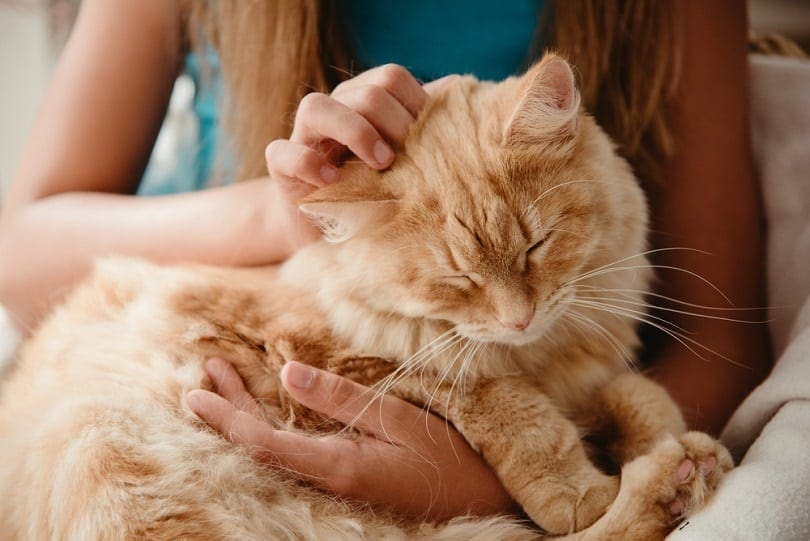
Respiratory Issues
If your cat is experiencing signs of respiratory distress, such as coughing, wheezing, or labored breathing, then they might prefer to sleep with their head elevated. Sleeping with their head up may allow them to breathe more easily.
If you notice your cat sleeping with their head up and their neck stretched consistently and for long periods of time, try to probe for signs of respiratory distress. This could be a sign of underlying respiratory issues that may need veterinary attention.
Pain or Discomfort
If your cat is constantly sleeping with their head up, they may also be experiencing pain or discomfort. Look out for signs of pain, discomfort, and restlessness aside from their sleeping position. Cats in pain may resort to sleeping with their head up as an attempt to alleviate their discomfort while also trying to rest. Underlying conditions may include issues like injuries, wounds, or illnesses, such as arthritis.
Should you suspect pain or discomfort, consult with a veterinarian for proper management and recommendations.
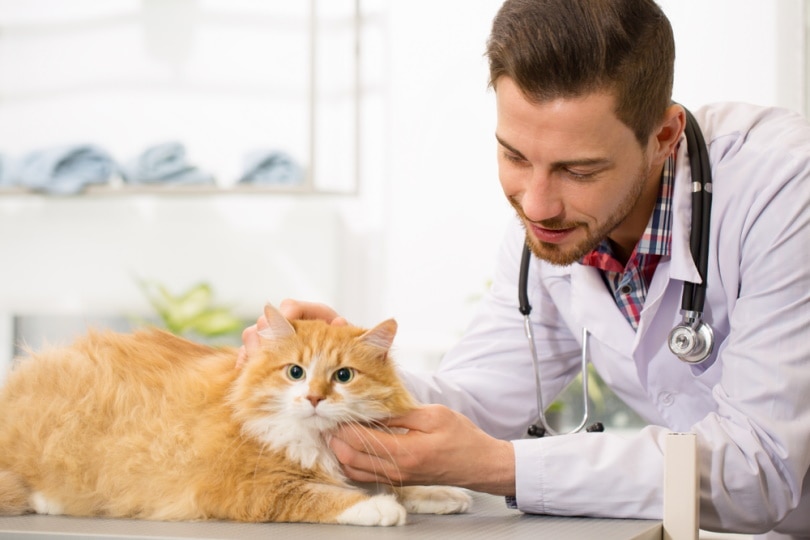
Behavioral Causes
Cats are creatures of habit and routine. Any change in their surroundings may cause anxiety and stress. When stressed and anxious, you can find evident changes in behavior, such as hiding, increased vocalization, restlessness, lethargy, excessive grooming, and even litter box issues. Changes in sleeping behavior can also be one of these signs—particularly the loaf position—allowing them to remain aware of their surroundings.
If they suddenly change their sleeping behavior to this position, try to look out for other signs of stress. Try to recall any major changes in their environment to identify potential causes of stress in your cat to address it.
What Other Positions Do Cats Normally Sleep in?
Cats sleep up to 18 hours a day. Like this head-up position, a lot of these cat positions may seem strange and uncomfortable to us humans. And like the loaf position, these are also completely normal!
With their flexible and nimble bodies, cats can sleep in a variety of positions while remaining relaxed and comfortable. Here are a few other sleeping positions that you may find your cat in while in dreamland:
- Curled in a ball
- On their backs, belly up
- Side sleeping
- Superman pose
- The “contortionist” position
- Sitting up position
- Paws across the face
- Perched on furniture or appliances
- Against the wall or furniture
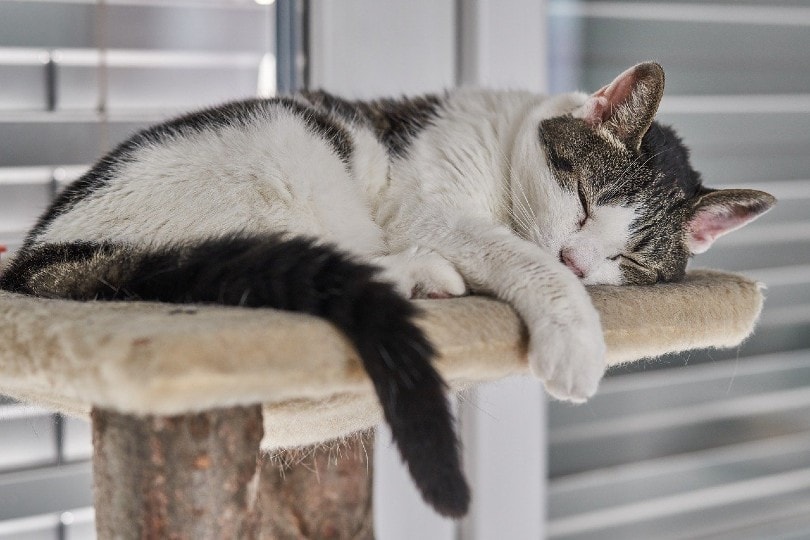
An important thought to keep in mind is that not all cats are the same. Each cat is unique with their own personalities, behaviors, and preferences. As a cat parent, take note and familiarize yourself with your cat’s typical sleeping behavior to identify if something is off or unusual.
Should you suspect something, or if you are unsure whether it’s normal or not, it is always safe to consult with your veterinarian for any recommendations!
With cats sleeping an average of 15 hours a day, you'll want to supply your companion with a bed that offers maximum comfort. Our Hepper Nest Bed was designed to support the various needs of cats of all ages, sizes and ailments, making it an excellent choice for any feline. It's high sides and wide top edge embrace kitties in whichever position they prefer to sleep in. A removable, machine washable liner ensures you can keep their bed fresh without compromising the structure of the durable foam shell meaning this modern bed will last your cat many years and cozy naps. Learn more about the Nest here.
Final Thoughts
Cats have flexible and agile bodies that allow them to sleep in different positions. While uncomfortable to look at, sleeping with their heads up in the loaf position is completely normal behavior for cats. This allows them to stay warm, secure, and relaxed, all while remaining vigilant of their surroundings. This position also allows them to quickly bounce up and move should they need to.
Again, this behavior is normal, but it may also be a sign that your cat is experiencing something unpleasant. Be sure to familiarize yourself with your cat’s sleeping habits to easily determine if there is a problem or not!
Related Reads:
Featured Image Credit: photosforyou, Pixabay


